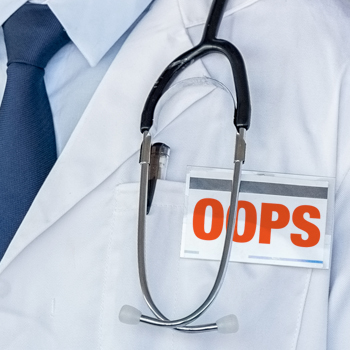
We know that physicians are not infallible, but we trust in their expertise to diagnose our health issues and provide appropriate treatment when it’s necessary. When healthcare professionals do not deliver the care we need, serious and long-lasting consequences can result for the patient. If you have suffered from the negligence of a physician — whether as a misdiagnosis, delayed diagnosis or any of the other common types of medical malpractice discussed below — you may have grounds for a medical malpractice case.
Misdiagnosis
Sometimes a physician fails to recognize the correct illness or condition in a patient (whereas a competent doctor would have diagnosed it). The doctor may incorrectly assume that a patient has no illness, or they may diagnose the patient with a condition that they do not actually have. Each of these situations is an example of misdiagnosis, the most common type of medical malpractice.
Such a mistake could result in the actual health condition progressing to a more advanced stage, which may require significant treatment and cause the patient greater pain and suffering. In the case of a serious condition like cancer, a misdiagnosis could even result in the patient’s death.
Misdiagnosis prevents patients from receiving the treatment they need to get better. Alternatively, healthy patients who are incorrectly diagnosed may end up receiving treatment they don’t need, which could be dangerous or cause unnecessary pain and suffering.
Surgical Error
The most clearly definable cases of medical malpractice often come in the form of a surgical error. In fact, some of these errors are so obviously negligent that they’re referred to as “never events,” which means that doctors agree these errors should never occur. Survivors of never events may not even require expert testimony in legal proceedings because the liability of the physician is so indisputable, although those requirements will depend on state laws.
Examples of “never events” include a physician leaving a surgical tool or sponge inside a patient’s body, or operating on the incorrect body part or person. Other surgical errors that may constitute malpractice and require the help of a surgery malpractice lawyer include:
- Performing unnecessary surgery
- Performing the incorrect procedure
- Administering an incorrect amount of anesthesia
- Causing damage to organs, nerves or tissues during surgery
- Using non-sterile surgical instruments
- Failing to provide adequate care after surgery
Birth Injury
Birth injuries are among the most devastating results of medical malpractice. They occur when an obstetrician, gynecologist or other medical professional causes lifelong harm to a newborn by failing to meet the professional standard of care. Birth injury malpractice can occur in many forms. For example, an obstetrician’s prenatal care may have been inadequate by failing to test for common illnesses during the pregnancy.
Negligence can also occur during childbirth, when even the slightest mistake may have permanent consequences. Instances of negligence during the birthing process may include:
- A physician’s failure to notice signs of fetal distress that required an emergency cesarean section
- An improper use of forceps
- Eclamptic symptoms in the mother, which can cause seizures that threaten the infant’s life
Failure to Treat
In some cases, a physician correctly diagnoses a patient but fails to recommend proper treatment; this may constitute the type of malpractice known as failure to treat. If a condition is not adequately treated, it may progress and cause further injury to a patient that could have been prevented. Examples of negligence on the part of a doctor who fails to treat a patient include:
- Failure to perform necessary medical tests
- Failure to assess and monitor a patient’s condition
- Failure to refer a patient to a specialist when necessary
- Failure to treat a patient due to a lack of health insurance or the wrong insurance
- Failure to clearly communicate the available treatments available for a patient’s condition
Medical Malpractice Lawyers with Historic Wins for Survivors
If you or a loved one has suffered due to the negligence of a doctor or healthcare facility, it is your right to recover compensation. When you partner with the nationally recognized lawyers at Janet, Janet & Suggs, we’ll help hold the responsible provider accountable — and seek the justice you deserve. Contact us today for a free, no-obligation consultation to discuss your case. We’ll serve as the counsel and support you need, so that you can focus on your healing.
RELATED POSTS
Our Lawyers Don’t Stop Fighting for Your Medical Malpractice Settlement Until Justice Is Served
Four Things You Need to Prove to Succeed in a Medical Malpractice Case
